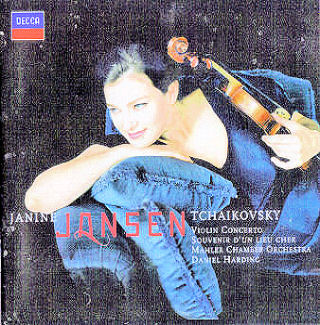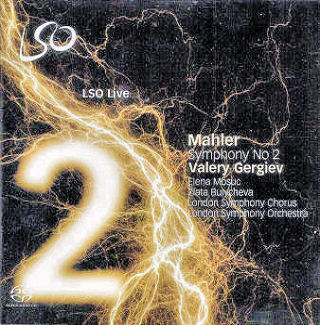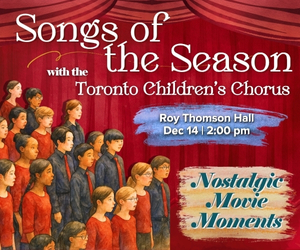|
Late Beethoven - Commentary and Performance Luisa Guembes-Buchanan Del Aguia DA 55306 (www.beethovenpianoworks.com)
Although Beethoven lived to age 56, he wrote his last piano sonata at the age of 52 – a period when his everyday existence was marked by deteriorating health and total deafness. Nevertheless, he was still able to rise above the complexities of his daily existence, creating some of his finest music, where he pushed the boundaries of tonality and form as he never had before. This fine 6-disc set on the Del Aguila label featuring pianist/musicologist Luisa Guembas-Buchanan and cellist Philip Weihrauch is an examination of the products of Beethoven’s final years, taking as its premise that these late works have numerous stylistic qualities in common. And what a wealth of music is included! Not only are there five late piano sonatas (#28 through #32) but also the Diabelli Variations, 11 Bagatelles Op.119 and 6 Bagatelles Op.126, in addition to numerous smaller pieces all from the sketchbook, plus the two Cello Sonatas Op.102 – enough to keep a Beethoven connoisseur happy for weeks! I admit the name Luisa Guembas-Buchanan was not one familiar to me. Originally from Lima, Peru she studied in her native city at the Conservatorio National de Musica, and later at the Manhattan School of Music before concluding her studies at New York and Boston Universities. Since then, she has held teaching positions at Amherst College and the New England Conservatory, where she has assumed the dual role of musicologist and pianist perhaps not unlike that of Charles Rosen 40 years ago. The scholarly notes she provides in the attractive 60-page booklet are impressive (they are in both English and German and even contain end-notes), but there is certainly more to Ms. Gumbas-Buchanan than scholarship. To anyone who might initially dismiss this recording as an example of a musicologist who “also happens to play the piano”, this is clearly not the case! From the serene and reflective opening measures of the Sonata Op.101 to the bravura of the Diabelli Variations, Guembas-Buchanan demonstrates an effortless command of this demanding repertoire. Her playing is noble and majestic, coupled with a flawless technique - quite clearly an artist who not only performs admirably, but possesses a deep understanding of the music and is keen to share that knowledge with others. The two Cello Sonatas presented here, Op. 102 #1 and #2 were composed during the summer of 1814, the very beginning of Beethoven’s late period. Just as in the works for solo piano, Beethoven was also “pushing boundaries” through his use of counterpoint and extensive modulations. Together with cellist Philip Weihrauch, Guembas-Buchanan approaches the music with a bold assurance and both demonstrate a deep affinity for the music. The pleasure in this set is indeed two-fold – apart from the illuminating information provided, it is also great listening - a treat both for Beethoven scholars and those who simply love and admire the music of “the great mogul”. Richard Haskell |
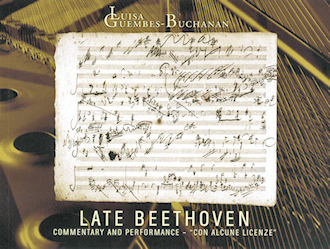 |
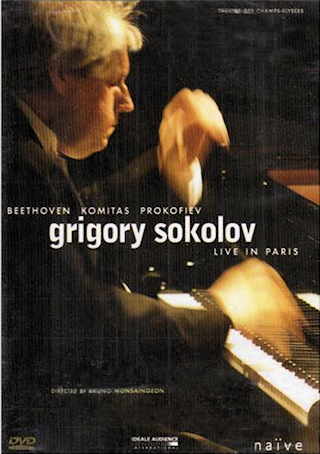 |
Grigory Sokolov – Live in Paris: Beethoven; Komitas; Prokofiev Directed by Bruno Monsaingeon Ideale-Audience DR 2109 AV 127 (www.ideale-audience.com)
If I mention the name Grigory Sokolov and you give me a blank stare, I wouldn’t be surprised. The reclusive Russian pianist, winner of the 1966 International Tchaikovsky Competition, regarded as a true successor to the giants, Gilels and Richter and who gives about 60 recitals a year to sold out houses in Europe, is almost unknown in North America. He hasn’t recorded much as he distrusts recordings unless they are made live and in one take. So this DVD is likely as close as you will get to seeing him live. The remarkable program starts off with 2 Beethoven early sonatas (Nos.9 & 10) played with an exquisite lyrical and romantic touch and a fine dynamic and emotional range. A more complex work, the Pastoral Sonata (No.15), is a true adventure especially the 2nd movement with its understated yet poignant ostinato staccato left hand and the beautifully shaded virtuoso Rondo finale. Sokolov’s phenomenal gift is getting inside the composer’s head and intuitively finding the right style although he never plays anything the same way twice. The 6 Armenian dances by Komitas that follow all sound similar yet different from one another. They are languid, soft, using exotic oriental rhythms to a mesmerizing, hypnotic effect. The final work is the monumental and fiendishly difficult Sonata No.7 by Prokofiev. The masterful interpretation winds up with ‘Precipitato’, a monstrous physical effort with an incessant toccata in steady ff and yet the pianist still manages to increase the crescendo to an overwhelming culmination. The ecstatic audience simply refuses to leave and Sokolov tirelessly keeps giving encores one after the other, five in all. Much more can be said, but let the music speak for itself. Janos Gardonyi |
Extended Play – CANADIAN STRINGS
By Terry Robbins
|
Three Sonatas for Violin and Piano - a mature work by Elgar, and early works by Richard Strauss and Ravel - are presented on an excellent disc by the Canadian duo Jonathan Crow and Paul Stewart on ATMA Classique (ACD2 2534). Elgar’s sonata, completed in September 1918, is a somewhat conservative piece that reflects the sombre effect on the composer of four years of the Great War. It has never really established a secure place in the repertoire, but is a work that really deserves to be heard more often. The Strauss sonata, written in 1887, is a passionate Romantic work clearly influenced by the chamber music of Brahms. The Ravel is an early single-movement work from 1897 that remained unknown until its discovery in manuscript many years after the composer’s death; its first public performance was in 1975. Crow, a Professor of Violin at McGill University and former concertmaster of the Montreal Symphony, plays with faultless intonation and a sweet, clear tone throughout. He has a sympathetic partner in Stewart, who is particularly outstanding in the Strauss. Recorded in Saint-Irenée, Quebec, the sound is excellent. |
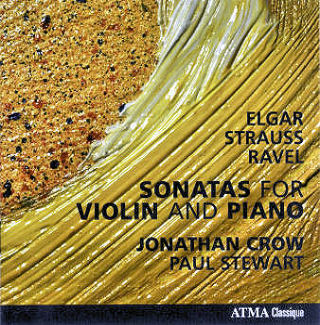 |
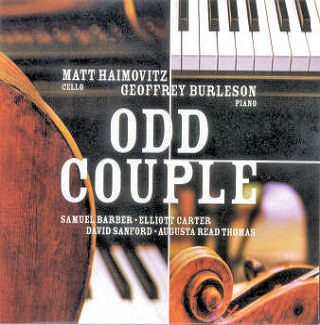 |
Odd Couple, the title of a new CD of American works from cellist Matt Haimovitz and pianist Geoffrey Burleson (Oxingale OX2015) is not a comment on the players; rather, it is taken from Matt Haimovitz’s description of the relationship between these two seemingly disparate instruments. Unsuitable partners they may be in some respects, but the music on this outstanding disc shows none of the weaknesses and all of the strengths that the cello and piano duo can display. The two central works are the sonatas by Samuel Barber and Elliott Carter, the former having its roots firmly in the Romantic tradition of the two Brahms sonatas, although firmly stamped with Barber’s own unmistakeable voice, and the latter, from 1948, harking back to the Beethoven sonatas in some respects while still looking ahead to Carter’s mature style. The opening and closing works are both world-premiere recordings: David Sanford’s 22 Part I from 1998 and Augusta Read Thomas’ Cantos for Slava, which was commissioned as part of an ASCAP award Haimovitz received in 2006, shortly after the death of Mstislav (“Slava”) Rostropovich. Thomas had worked closely with the great Russian cellist over the previous 15 years. The disc was recorded this past June at McGill’s Schulich School of Music, where Haimovitz is Professor of Cello. The sound quality is excellent, and both players are outstanding in difficult and challenging, but highly rewarding, repertoire. |
|
There are two recent CDs of the Bach Goldberg Variations in the string trio arrangement by the violinist Dmitri Sitkovetsky. On the firstthe abovementioned Jonathan Crow and Matt Haimovitz team up with violist Douglas McNabney (Oxingale OX2014); the other features Vancouver’s Trio Accord - Mary Sokol Brown (violin), Andrew Brown (viola) and Ariel Barnes (cello) (Skylark Music SKY0802). As McNabney points out, Bach’s music is strong enough to transcend the many transcriptions that have been made of this work; certainly this version, which Sitkovetsky dedicated to Glenn Gould, serves the predominantly three-part keyboard writing extremely well. There are many differences in tempo and track timings here, the latter probably due to the observance - or lack thereof - of repeats as much as anything, but both recordings are extremely satisfying performances. The playing is excellent on both CDs, both from an individual and ensemble viewpoint, and the recording ambience - both were recorded in a church - is warm and resonant. On first hearing I preferred the brightness and contrast in the Trio Accord CD, whereas the Quebec-based ensemble plays with a touch more legato throughout, but on further comparison I’m not so sure; in two outstanding recordings I have a feeling that it’s Jonathan Crow and friends who come closest to the spiritual heart of this astonishing work.
Terry Robbins
|
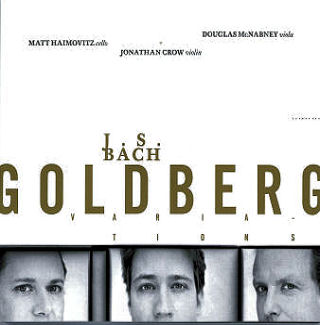 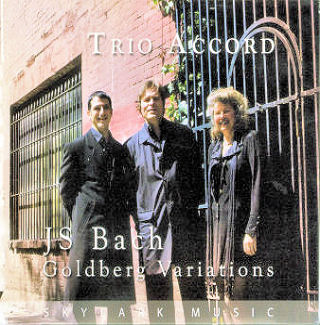 |


